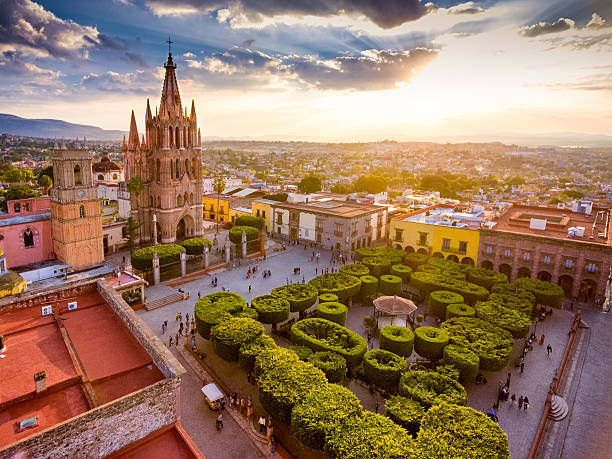Hugging the Edge of the Earth in Big Sur
- Sean Conway

- Jun 22, 2020
- 4 min read
Last year, the full stretch of Pacific Coast Highway that carves through California’s Big Sur finally reopened after rockslides rendered the throughway impassable last year. Big Sur is one of those almost mythical places you hear in songs and read about in poems, and in well-worn back-pocket novels, dog-eared and highlighted, by Beat writers like Jack Kerouac: a vast canvas of God-created art that has inspired mortals to then in turn interpret into their own art. Henry Miller, who called the area home for two decades, wrote of it, “It was here in Big Sur that I first learned to say ‘amen.’”
Amen.
I’ve spent a lot of time visiting family in Southern California, bouncing from San Diego to Oceanside and, sometimes, L.A., Santa Monica, and Santa Barbara. But to really understand the scope of California and let yourself breathe in its full, epic scope, a drive north, past the glitz and congestion of the Hollywood area, to Morro Bay—the gateway to Big Sur Country—is what some might call a bucket list must.
While the drive can technically be done in three hours, I can’t imagine someone blasting straight through like that, as though late for work. Big Sur isn’t just to be driven through, it’s to be savored, a fine wine, a once-in-a-lifetime multi-course meal, a meditation.
The two-lane Pacific Coast Highway climbs into the hills past Morro Bay, winding in a serpentine tangle and clinging to the cliff’s edge, a slope of thick trees, green and striking, angling toward you from the east and the blue expanse of the Pacific stretching out below you to the west. You're at the farthest reaches of the United States, the two left tires of your vehicle spitting pebbles that tumble down into the abyss. A guardrail protects you, or pretends to. Your wife tells you to keep your eyes on the road, and of course you have to because the road doesn’t stay straight for long, if at all, but it’s a difficult challenge. Like a bad alignment, my head keeps drifting left.
Fortunately, there are turn-offs at most every bend. We took advantage of many of them, stopping for a quick stretch and for photos, or just to stand in wonder and awe, the high altitude breeze rippling our clothes and somehow purifying us. Then, back in the car, prepared to drive for a while and finally make some real headway, we’d round the next corner and have to pull off again, another opportunity, another panoramic vista, we just couldn’t pass.
On the northern side of Big Sur, we stopped for lunch at Nepenthe, a one-time haven for the writers, poets, and dreamers who’d held this raw landscape so close to their art and hearts. The restaurant sits atop yet another hill, its natural wood almost camouflaging it, or at least making it look like it grew out of Big Sur’s magical soil. We sat outdoors—there is no choice; it’s all outdoors—and ate overlooking a long, dramatic bluff sloping away into the unknown. It’s a beautiful spot, of course, but for the first time in a long while we were surrounded by people again, and while we were all sharing this communal experience, we were anxious to get back in the car and get some distance between us and them, to disappear again into the trees and hills and sea, back to where you could feel each long draw of breath replenishing you, healing, making you whole again, repairing the cracks.
We came out the other side reborn, every cell in our bodies rejuvenated, as though we’d passed through some kind of wormhole, deconstructed and put back together again. But it wasn’t a wormhole; it was the Pfeiffer Canyon Bridge, the iconic stretch of steel that you’ve seen probably in every single car commercial ever filmed. We drove the twenty-mile loop around Carmel-by-the-Sea and then Monterey for dinner and sleep. The next day, we detoured inland to Salinas to visit the John Steinbeck Center. Steinbeck: who’d written so purely about our connection to the land and our search for happiness and balance in novels such as Of Mice and Men and The Grapes of Wrath. I spent time looking at his green camper truck that he’d criss-crossed the country in with his poodle, Charley, and I imagined this green camper van rolling along the scoliosis spine of Big Sur, its dim and yellowed headlights struggling to cut through the ink of Big Sur’s night, a canopy of stars mapping the way from above.
Before San Francisco we spent a night in Santa Cruz, enjoying the town’s bohemian vibe. Here, they understand our small place on this planet, the heartbeat of time we actually have, compared to the permanence of Big Sur to Santa Cruz’s south and Big Basin Redwood Forest to its direct north, with its thousand-year-old giants standing watch, existing both rooted in the earth and stretching into the heavens, a dual-citizenship of sorts.
For us, Santa Cruz was a depressurization chamber, a place to acclimate ourselves again to our fellow man. Beards, beads, barefoot, they helped ease us back in, with song and dance and the warm glow of their street lanterns and strung lights. A chocolate-chip cookie and glass of milk from the Pacific Cookie Company, maybe two, and the ache of having to leave Big Sur behind became—at least a little—easier to bear.



Comments